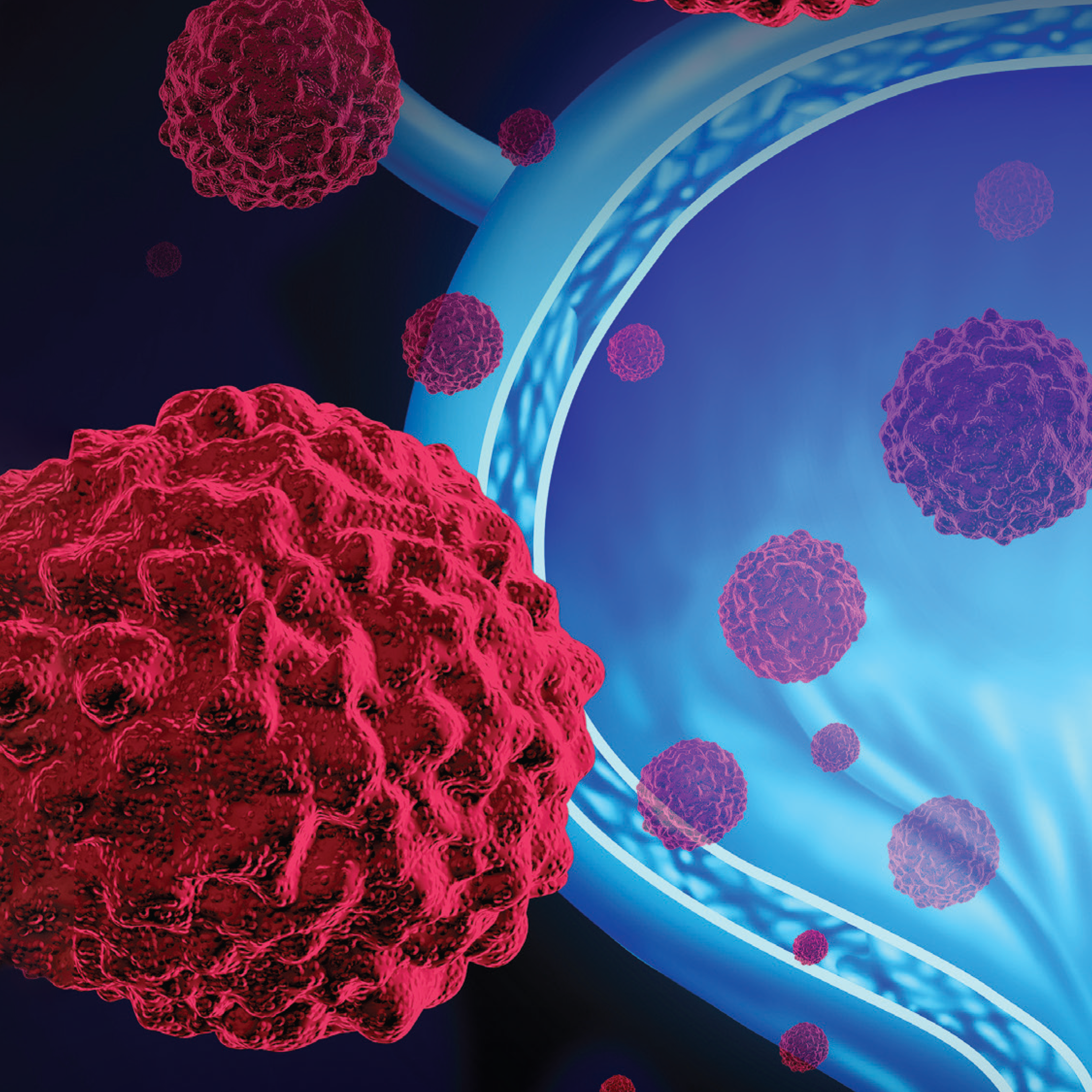Pelvic Radiation Confers More Complications After Bladder Cancer Surgery
Findings may establish a framework for assisting patient counselling and optimizing therapy selection for those undergoing radical cystectomy.
"[These] data provide framework to assist in patient counseling and optimizing selection," according to the study authors.

Sequencing pelvic radiotherapy before radical cystectomy appeared to confer a higher likelihood of complications vs primary radical cystectomy among patients with bladder cancer, according to findings from an analysis of the National Surgical Quality Improvement Program Targeted Cystectomy database presented in a poster session at the American Urological Association (AUA) 2025 Annual Meeting.
Of note, the addition of pelvic radiotherapy correlated with significantly higher odds of rectal injury (OR, 3.14; 95% CI, 1.51-6.55; P = .002). Additionally, investigators reported a higher likelihood of 30-day readmission (OR, 1.38; 95% CI, 1.06-1.79; P = .016), sepsis (OR, 1.61; 95% CI, 1.08-2.41; P = .019) surgical-site infections (OR, 1.59; 95% CI, 1.16-2.18; P = .004), and organ-site infections (OR, 1.74; 95% CI, 1.18-2.57; P = .005).
Data revealed significant differences in prolonged length of stay (OR, 0.53; 95% CI, 0.01-1.04; P = .044) and operative time (OR, 25.85; 95% CI, 13.17-38.53; P <.001) for patients who received pelvic radiotherapy vs those who did not. A subgroup analysis highlighted that the association between rectal injury and use of pelvic radiotherapy was restricted to patients who were 65 years or older, had a BMI of 30 or higher, had no receipt of neoadjuvant chemotherapy, and underwent open radical cystectomy.
“We show an overall increase in complication rates following [pelvic radiotherapy],” lead study author Renil S. Titus, a urology research fellow at Houston Methodist Hospital, wrote with coauthors. “[These] data provide framework to assist in patient counseling and optimizing selection.”
According to the study authors, 19.5% of those with pelvic cancer apart from bladder cancer undergo pelvic radiotherapy. Additionally, they described how prior pelvic radiotherapy may put patients at a risk for developing bladder cancer of locally advanced or aggressive variant histology.
The investigators noted that radical cystectomy in patients who previously underwent radiotherapy may confer higher risks of rectal injury, urinary leaks, and other complications. The spread of robotic radical cystectomy has also yielded limited population-level data on the rates of complications associated with contemporary radical cystectomy among patients with prior pelvic radiotherapy.
With this context in mind, investigators sought to use the American College of Surgeons National Surgical Quality Improvement Program Targeted Cystectomy database to assess perioperative complication rates in patients undergoing radical cystectomy after pelvic radiotherapy vs those with primary radical cystectomy alone. The study authors used a greedy algorithm based on a caliper of 0.009 to match patients with pelvic radiotherapy and radical cystectomy (n = 394) to those with radical cystectomy alone (n = 1958) at a 1:5 ratio.
Patients 18 to 90 years old with receipt of radical cystectomy for bladder cancer were included in the analysis. Investigators excluded patients who were older than 90 years old, had non-elective cases, received laparoscopic surgery, had unexpected conversions to open surgery, or had missing data.
The study’s primary end point was the incidence of cystectomy-specific complications, which included bowel to bowel anastomotic leaks, urinary leaks, return of bowel function, and rectal injury. Major complications were a secondary end point, which was a composite of factors including 30-day mortality, return to the operating room, stroke, and 30-day readmission. Investigators also evaluated individual components of each of the secondary end points as well as general surgical outcomes.
Investigators noted that all baseline characteristics were comparable across the pelvic radiotherapy plus radical cystectomy population and the primary radical cystectomy alone population. As part of exploring the heterogeneity of effect between operative approaches, investigators divided patients into subgroups based on factors such as age, diabetes with or without insulin use, receipt of neoadjuvant chemotherapy, BMI, and surgical approach.
Reference
Titus RS, Xu S, Mundra V, et al. The association between prior pelvic radiotherapy and surgical outcomes in patients undergoing radical cystectomy for bladder cancer: an analysis of national surgical quality program targeted cystectomy database. Presented at the American Urological Association (AUA) 2025 Annual Meeting; April 26-29, 2025; Las Vegas, NV. Abstract IP 24-23.